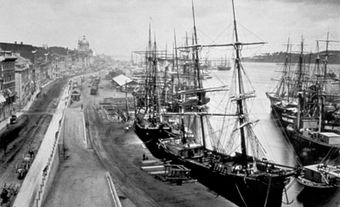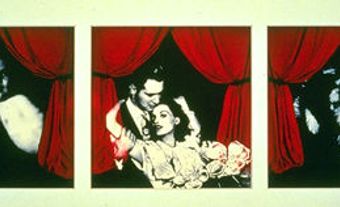Larry Towell, photographer (born 1953 in Chatham-Kent, ON). Winner of the prestigious Hasselblad Foundation Award for photography and the first and only Canadian member of Magnum Photos (the world’s premier agency representing documentary photographers), Larry Towell is among the most distinguished photographers of his generation. Author of 13 books, his photographs and photo essays have regularly appeared in The New York Times, Life, Rolling Stone, The Walrus and many other publications.
Education and Early Career
Towell grew up in a large family in rural Lambton County, Ontario, where he continues to live, and studied visual arts at York University in the early 1970s. He soon, however, moved on to poetry and music — he has published several volumes of poetry and continues to perform his own idiosyncratic, politically-charged folk songs, accompanying himself on the banjo.
Towell’s lifelong concern with wealth, the poor and the dispossessed was in part inspired by work he did as a volunteer in
Central America and Mexico
Towell’s career as a documentary photographer essentially began with his coverage of the civil war in
September 11th, 2001
On the morning of 11 September 2001, Magnum Photos had a board meeting in midtown Manhattan. When it became clear that what was happening at the
Palestine
Towell has spent years documenting different phases in the conflict between
In addition to his photographic work, Towell has also documented life on the West Bank and
Panoramic Cameras and the Aftermath of Katrina
In addition to shooting with traditional cameras, Towell also works with panoramic cameras that allow for a horizontal sweep that works especially well for landscapes. Many of the photographs published in his book In the Wake of Katrina (2005), which capture the destruction wrought by Hurricane Katrina along the coast of
Afghanistan
Between 2008 and 2011, Towell travelled to
Kiev
In February, 2014, Towell travelled to
The View from My Front Porch
In addition to his politically-charged international work, Towell also takes more personal photographs of family and friends in and around his farm in Lambton County, Ontario, many of which are collected in his book The View from My Front Porch (2008). In one, from 1995, Towell’s wife is seen from behind holding their infant son, their older son peering out from a window in an old oak door; on the porch wall is a huge water buffalo skull Towell bought during a trip to
Honours
Towell is the recipient of numerous major, museum-level exhibitions, including ones at the

 Share on Facebook
Share on Facebook Share on X
Share on X Share by Email
Share by Email Share on Google Classroom
Share on Google Classroom


